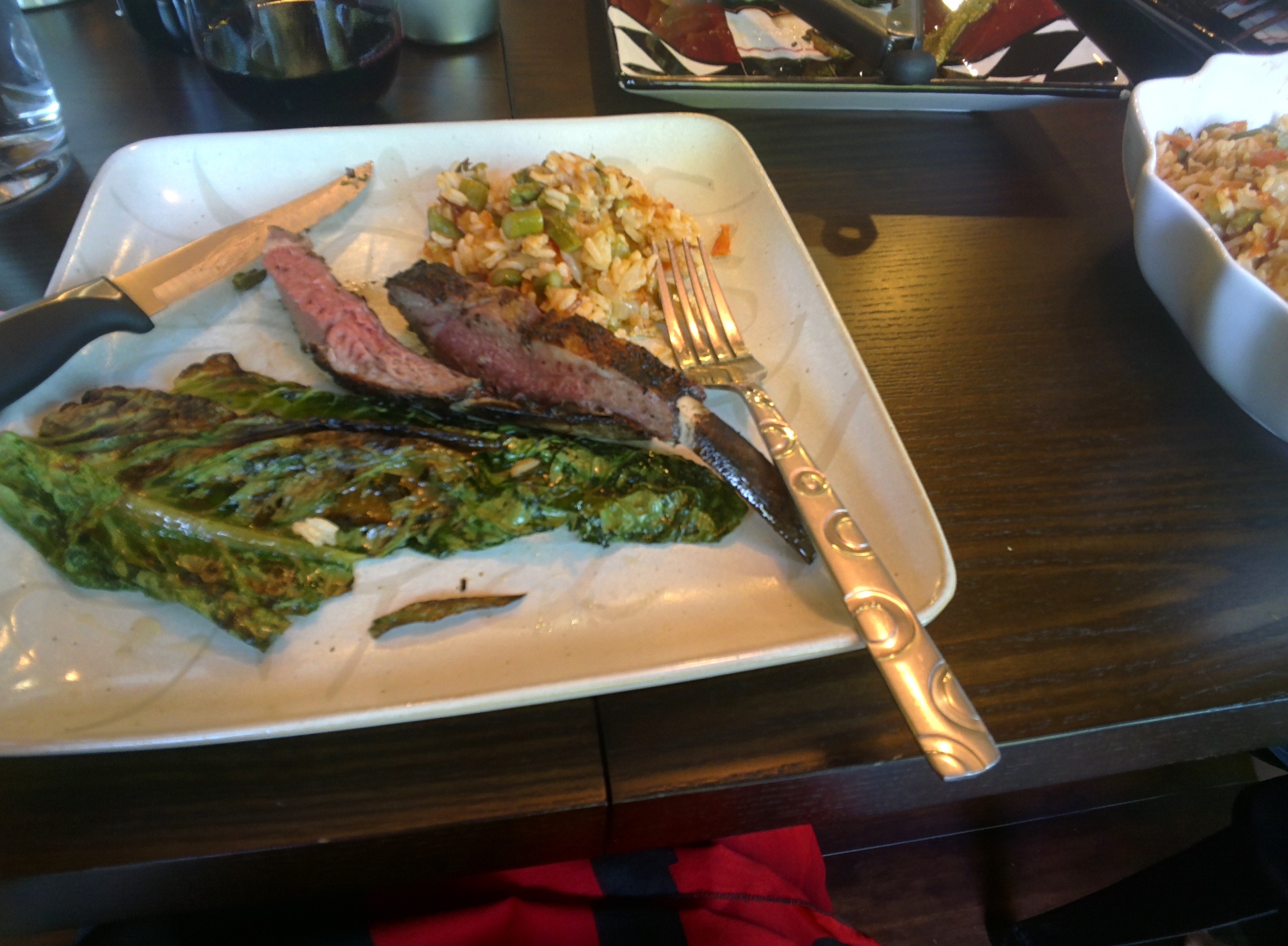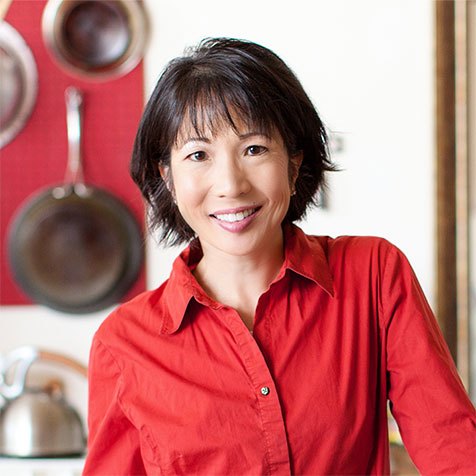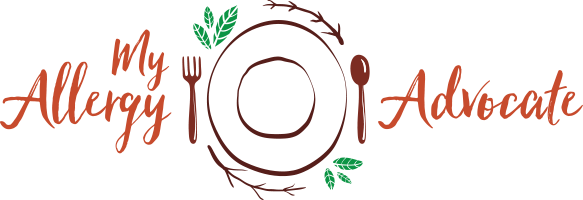Everyday Low Carb High Fat Eating

People want to know how hard or easy it is to eat a low carb high fat diet on a daily basis. Read this post, and watch my embedded video, to hear more about making this work for you.
As I ran along the flat trail, cyclists zipped past me. At their speeds, they barely noticed my 14-minute mile pace. Some of the other runners on the trail, however, easily passed the woman whose slow jog could have easily been eclipsed by a fast walker.
And that was just Mile Number Two. Sigh.
Nearly an hour later, a female runner overtook me from behind. As she passed by, she quietly said, “At that pace, I bet you could run forever.” And then she smiled at me. She completely understood what I was doing.
You see, running at that turtle’s pace was a purposeful part of my training program from my coach. Because my diet was already nutrient dense and naturally low in carbohydrates in its absence of cereal grains and processed foods, we wanted to turn my body into a fat-burning, efficient machine. The way you do this is to match the diet with months of slow, low heart rate running. Ultra runner Larissa Elaine Dannis used low heart rate running to transform herself from a recreational road runner to a 50 mile trail running champ in four years.
But this is a blog about food, so let’s talk about the food side of this equation. You can find quite a few articles about Dr. Phil Maffetone‘s non-method methodology of training bodies to go long, including the diet that helps this to happen. What I share with you isn’t about what this diet is, as much as it’s about how to pull this off on the day-to-day life of having a job, training for a Half Ironman and an Ironman, and having the energy to enjoy life.
This is everyday low carb, high fat eating, which is essentially what most people on the LCHF, Autoimmune Protocol (aka AIP), and medically Paleo diets are eating. What is life really like when you eat like this?
I’ve made a video clip for you. It’s all about ways to find out what you might need to change to eat in a way to become more metabolically efficient. Please take a moment to listen, jot a note or two down, and consider your options.
[youtube https://www.youtube.com/watch?v=T4h1PHaGXhc]
From my own archived journal entries, here what this LCHF triathlete did to become a more fat-burning, efficient athlete while taking care of my autoimmune disease and my energy needs:
Phase I – Transitioning from whatever you were eating before to Low Carb High Fat (LCHF)
While my diet was already low in carbohydrates from cereal grains for over two years, I was still eating rice and potatoes for starches, and not always feeling very good, energy wise. What I noticed is that I would need to eat food and refuel within 30-45 minutes if exercising hard, and I would get hunger headaches in two hours after eating a meal.
I discovered that I wasn’t eating enough calories to start with, and that my macronutrients were not balanced. Calories are not calories. Each body is different, and I didn’t know what calories my body preferred.
After submitting myself to a Metabolic Efficiency Test, I was able to know what my Resting Metabolic Rate (RMR) was so I could calculate how many calories I needed daily just to maintain my weight and feel pretty good. The MET test includes both an RMR and a running (or cycling) test involving a mask that goes over your nose and mouth to get an accurate analysis of your cross-over point, the point where your body moves from burning carbohydrates to fat. The test allows you to look at what your heart rate is in the zone that best trains your body to become an efficient fat burner. If you watch the video embedded in this blog post, I talk a bit more about this test.
My heart rate range was set for 128 bpm – 138 bpm, which was much slower than I normally liked to run. When I began training for long periods of time in this heart rate zone, I experienced something dramatic: my need for food during exercise dramatically decreased. Instead of feeling like I needed to eat something every 30-45 minutes, I could exercise and run up to three hours without refueling.
However, in Phase I, everyday eating was a little wonky at first. The headaches were sometimes more than annoying. I also had difficulty learning to eat more animal protein in a single sitting, or to remember to snack on something with animal protein, since other protein sources were prohibited because of my extensive list of food allergies.
Lunches and dinners were often the same few foods, just in different amounts. I tend to eat a larger lunch and a smaller dinner. I rotate about four different protein sources (chicken, fish, beef, lamb, and shellfish), and five different vegetables (broccoli, parsnips, wilted greens, beets, cauliflower), and I change up the spices to make them a little more interesting. I also make sure to add oils, such as olive oil or coconut oil. Dessert is a treat that I rarely have, mostly because the sugar doesn’t make me feel very good.
I will say this, for the record. I almost never went to bed feeling hungry. And every workout that I had was one where I didn’t need to eat if it only lasted up to three hours.
Huzzah!
Phase II – Go Long and Test Stuff Out
I mentioned in Phase I that I learned that my body could exercise in a low heartrate zone for up to three hours without needing to refuel.
That is not a typo. Three hours, folks. I even tested this on an Olympic Distance race that took me a little over three hours to complete. I did not refuel. So, while the time I completed it in wasn’t particularly fast (I was 108 out of 140 in my Age Group), it was rather astounding was how I didn’t need any food, just water and an electrolyte tablet.
In Phase II, my workouts were getting longer. Four hour bike rides indoors on a Computrainer meant that I needed to create foods I could digest easily, as commercially-made race foods are often filled with ingredients that aren’t Celiac safe, or contain ingredients that are in my food allergic lists.
The easiest way to prepare food is to do batch cooking sessions, and so I simply incorporated my race food ingredients into my batch cooking session of the week, which is a base of cooked sweet potatoes. From there, I could mix in a protein of my choice and a simple sugar, such as maple syrup. By keeping the protein separate from the mixture, I could see exactly how much protein I was consuming per hour, and then ration my protein out across the four hours of exercise. Then I would record my performance outcomes (comfort, energy, finish time, digestion, etc).
Some tests went better than others. If I had too many berries that morning, I might be more acidic and feel off. If I didn’t make enough sweet potato mixture, I might bonk in the last half hour, feel slower, or contemplate eating my hand in order to finish my workout! [Note: I wouldn’t recommend cannibalizing your own tissue]
Test and retest. You have to find what works for you. Even a licensed nutritionist can’t do this part for you, because your body is different from everyone else, and a generalized diet only works in general, not in specific. You have to customize it to you.
It’s worth the work. The best part was no longer feeling like my guts were going to fall apart on me.
Phase III – Maintaining Weight and Socializing
The biggest challenge for me is keeping up with a maintenance weight. Eating LCHF every day is not particularly difficult for me because my choices are already restricted. What is more difficult is eating enough protein at each meal, and then feeling free to socialize with others who do not need to eat the way I do.
Planning for multiple activities while on the go is complicated on this nutritional plan. Spontaneous activity after a planned activity isn’t always in the cards for me, because I can pretty much count on those activities to be filled with food that I cannot have.
My best advice to you try to have some dried foods with you at all times. Since they don’t require refrigeration, you can always pack them into food storage containers and put them in your car, workout bag, plastic baggies, and backpack. This allows you an extra couple of hours of socializing without you having to pay the piper with hit-and-miss options.
LCHF Eating and Food As Medicine
Just like a diabetic would carry her medicine with her in case her insulin needs should change, you can carry your food just like it is medicine, because to us, food is medicine!
When you treat your food as medicine, you will always have available what you need. You consume what you need, and you don’t substitute other foods that might have your allergens, cross contamination with gluten, emulsifiers, or oils that aren’t good for your body. You won’t even need to stop by a store to buy “gluten free food products”. You don’t eat food products; you eat food.
The low carbohydrate high fat foods for people with food allergies and/or autoimmune diseases are generally not found in a can, a package, a box, or a bottle. They are ingredients you mix and compound together, as if you are a culinary medical practitioner in your own kitchen. Yes, it can feel like a type of food alchemy, yet you are no flim flam; you become the food hero you’ve been waiting for.
This part isn’t a phase. It’s the rest of my life, and it may be the rest of yours.
Eat well. Go long. And make food fun again.
—————-
If you are new to this journey, I have a little something special cooked up (pun intended) for you. In June 2016, I will select 6-8 people across the country who are ready to commit to a 30 day program with weekly assignments, resources, and group online meeting (phone and/video) to help transform you from intimidated and overwhelmed to confident and knowledgeable about a lifestyle of cooking at home and the mindset of food as medicine.[Update: I’ll be running another beta group shortly. Please contact me if you’re interested. The group is run remotely, so it doesn’t matter where you live].
If you are interested in more information about my 30-day program, please email me at imei dot hsu @ gmail dot com, and I will send you information on this inaugural group format from MyAllergyAdvocate to you!




